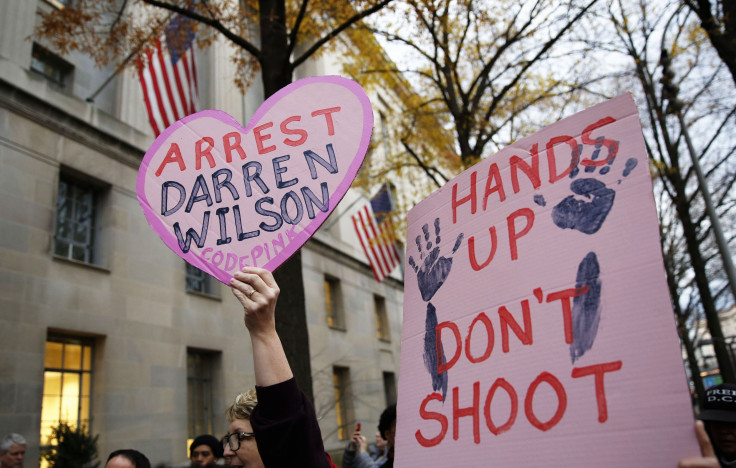Why Did Police Kill Michael Brown? 5 Facts About Teen’s Death

Tuesday marks the second anniversary of a death that inspired a movement calling for social change. On Aug. 9, 2014, 18-year-old Michael Brown — unarmed and in plainclothes — was shot multiple times, including in the head, and killed by then-police officer Darren Wilson in Ferguson, Missouri.
Brown’s untimely death gave the Black Lives Matter movement momentum and, since his demise, subsequent high-profile cases of the intersection of law enforcement and race have shined a spotlight on police brutality cases. According to the Guardian’s The Counted, 160 African-Americans have been killed by police thus far in the 2016 calendar year.
Below are five facts to know about Michael Brown’s death:
1. Brown was walking with his friend, Dorian Johnson, in the middle of the street when Wilson stopped them, according to Ferguson Police Chief Tom Jackson in a press conference. Later, Jackson alleged that Wilson noticed Brown holding a box of cigars that had been reported stolen. However, some news outlets, including the San Francisco Bay View, reported that Brown appeared to have paid for them.
2. Authorities said Brown and Wilson had an altercation inside the police vehicle with Brown reaching for Wilson’s weapon. According to witnesses and Brown’s family, Wilson shot Brown while the teen was raising his hands to surrender.
3. An autopsy revealed that Brown was shot six times, with four shots in his right arm and two in his head. Private pathologist Dr. Michael Biden, who was hired by Brown’s family, concluded that the teen died from a bullet that entered his skull.
4. The St. Louis County prosecutor announced on Nov. 24, 2014, that a grand jury chose to not indict Wilson.
5. Brown’s death and the aftermath of Wilson not getting indicted resulted in protests and rallies. Brown’s father has created the Michael Brown Foundation, which will host its second annual Walk for Justice starting at the memorial site. The foundation aims to empower youth and give back to the community. Social media outcry allowed the Black Lives Matter movement to gain momentum after Brown’s death to highlight the social injustice and police brutality.
© Copyright IBTimes 2024. All rights reserved.












